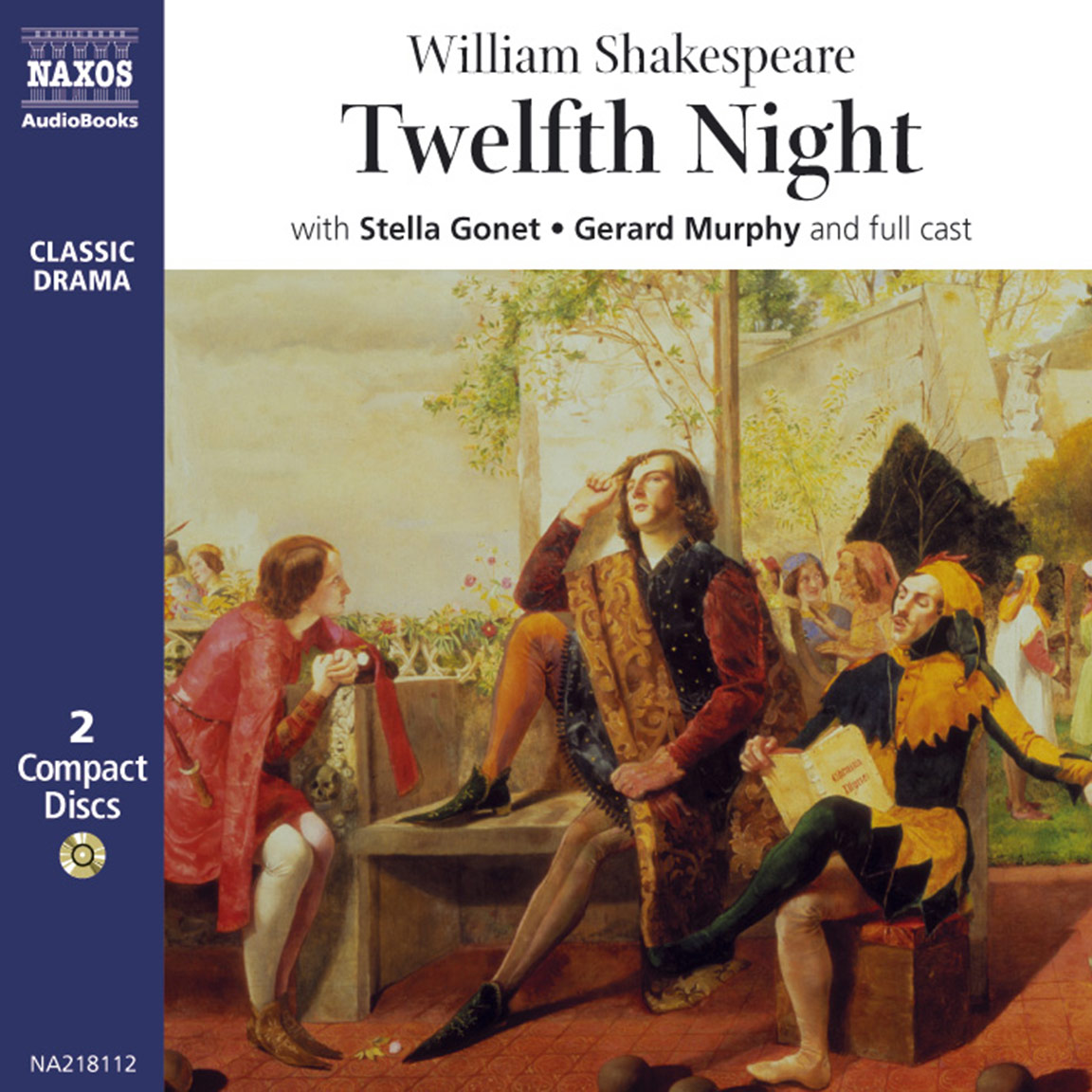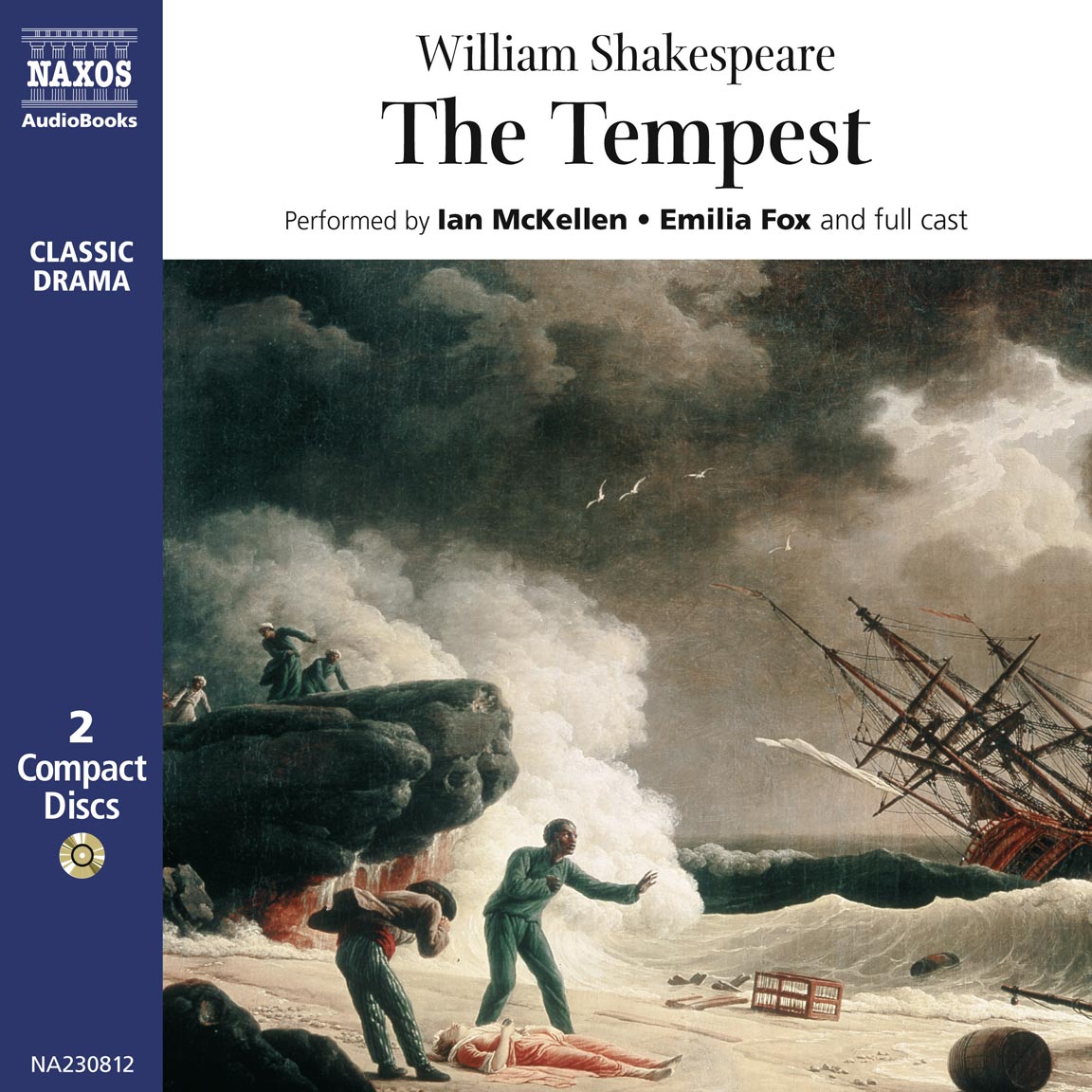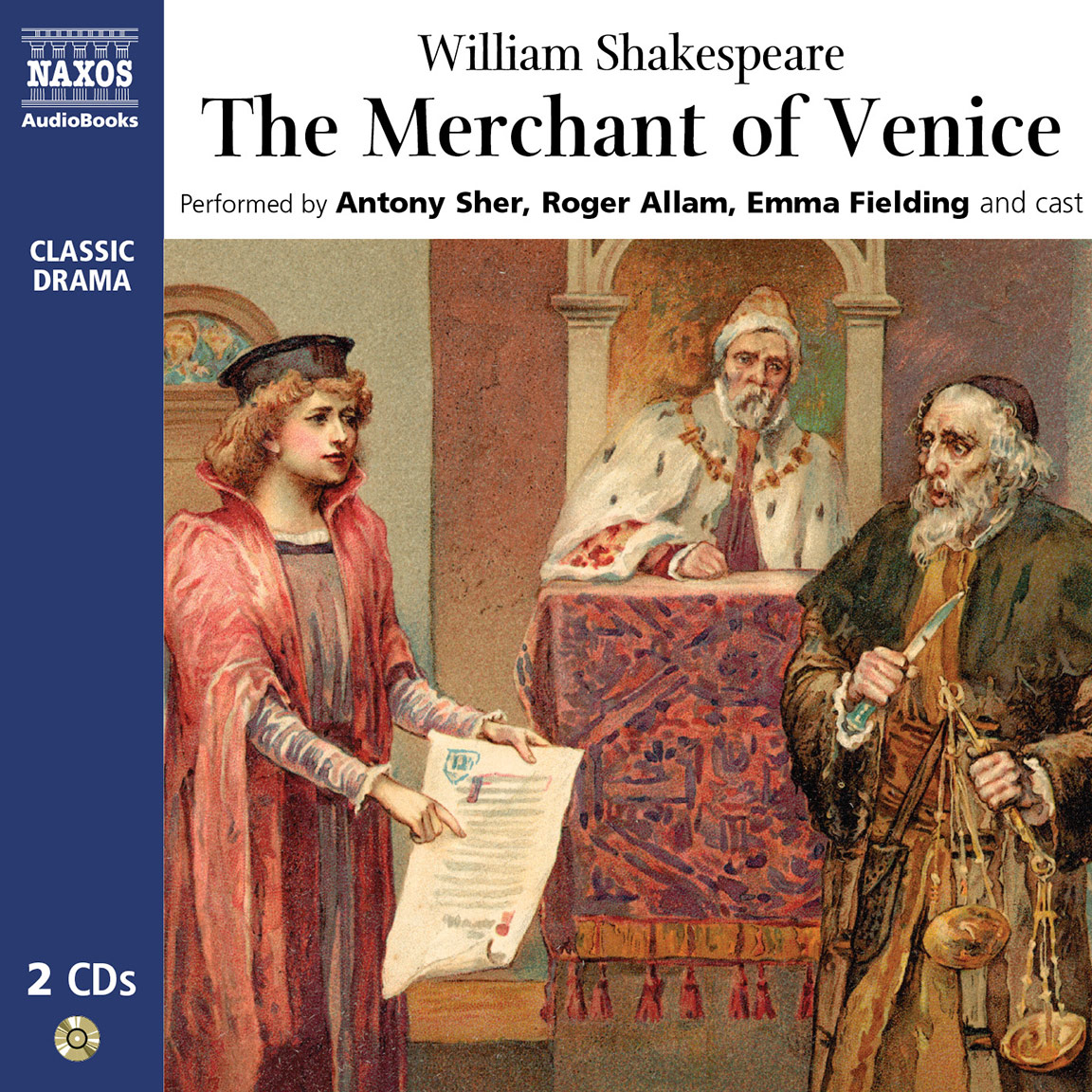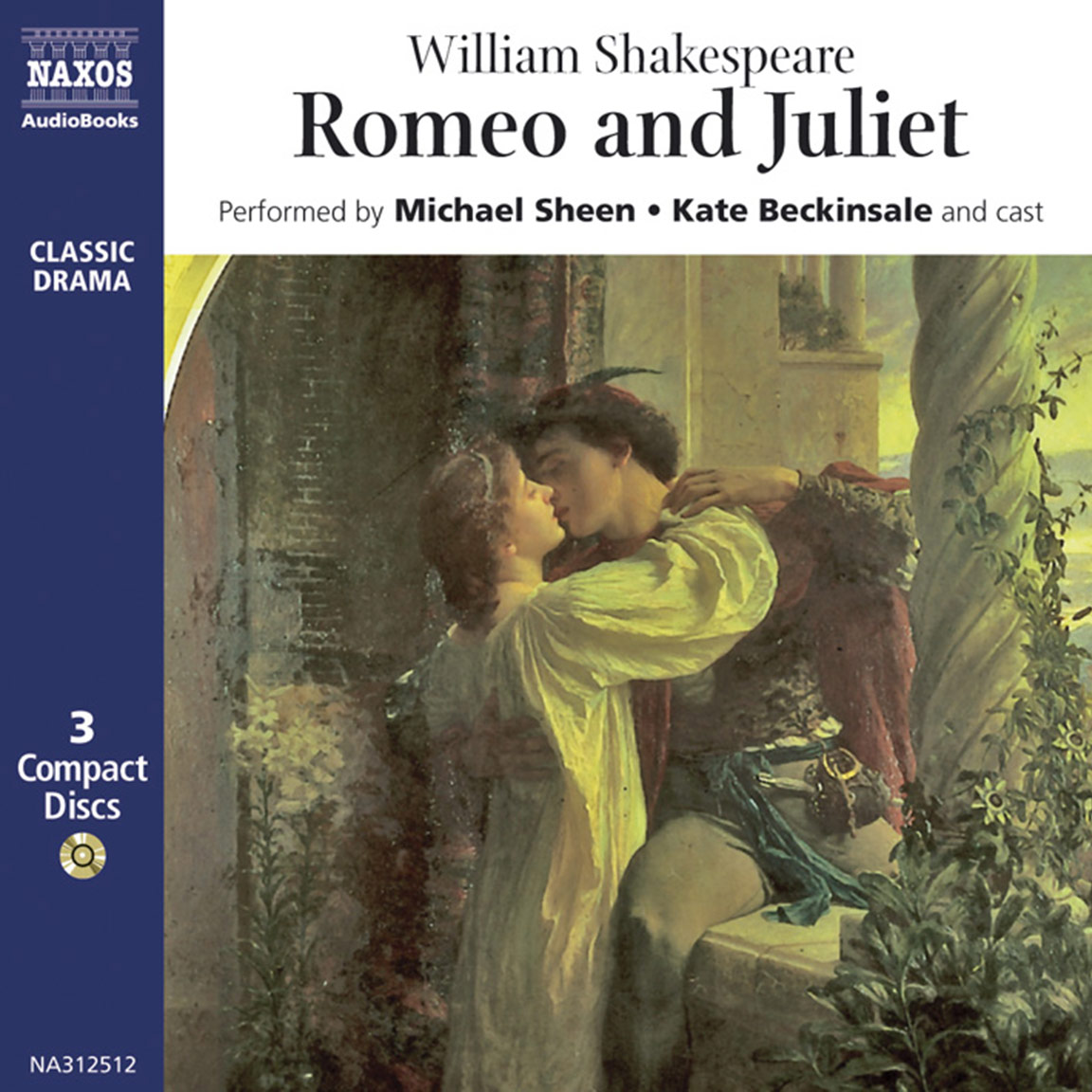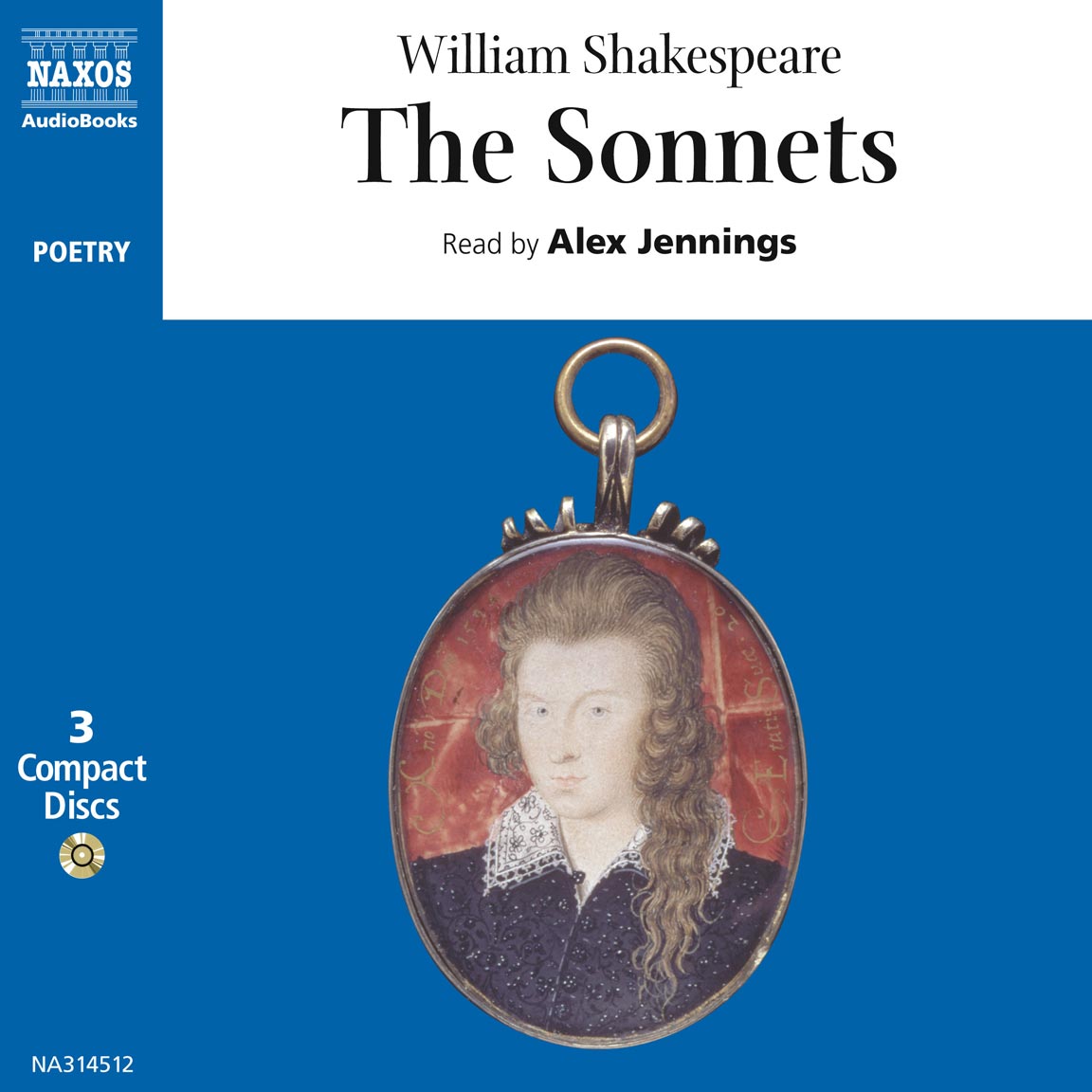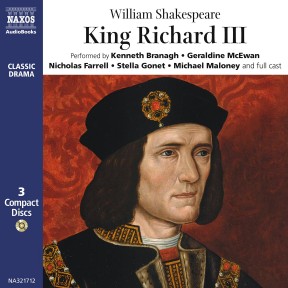
Audio Sample
William Shakespeare
King Richard III
Directed by David Timson
Performed by Kenneth Branagh, Geraldine McEwan, Nicholas Farrell, Stella Gonet, Michael Maloney, John Shrapnel, Celia Imrie, John Woodvine, Bruce Alexander, Auriol Smith, Raphael Clarkson, Louise Alder, Dominic Kraemer, Jamie Glover, Stephen Thorne, Daniel Philpott, Jonathan Keeble, Peter Yapp, Barrie Jaimeson, Nick Fletcher, Neville Jason & David Timson
unabridged
Kenneth Branagh heads an outstanding cast in playing one of Shakespeare’s strongest characters. The eighth production in the widely admired series of Shakespeare plays presented by Naxos AudioBooks in association with Cambridge University Press.
-
3 CDs
Running Time: 3 h 20 m
More product details
ISBN: 978-962-634-217-6 Digital ISBN: 978-962-954-689-2 Cat. no.: NA321712 Download size: 97 MB Produced by: Nicolas Soames Directed by: David Timson BISAC: DRA010000 Released: December 2000 -
Listen to this title at Audible.com↗Listen to this title at the Naxos Spoken Word Library↗
Due to copyright, this title is not currently available in your region.
You May Also Enjoy
Cast
- Kenneth Branagh
- Richard, Duke of Gloucester, later King Richard III
- Michael Maloney
- Clarence
- John Shrapnel
- Lord Hastings
- Stella Gonet
- Lady Anne
- Celia Imrie
- Queen Elizabeth
- Nicholas Farrell
- Duke of Buckingham
- John Woodvine
- Lord Stanley, Earl of Derby
- Geraldine McEwan
- Queen Margaret
- Bruce Alexander
- King Edward IV
- Auriol Smith
- Duchess of York
- Raphael Clarkson
- Prince/Clarence’s Boy
- Louise Alder
- Clarence’s Girl
- Dominic Kraemer
- Duke of York – Boy
- Jamie Glover
- Earl of Richmond
- Stephen Thorne
- Brakenbury/Grey/Citizen 1/Norfolk/Messenger 4/Cardinal
- Daniel Philpott
- Rivers/Page/Lovell/Messenger 1/Ghost of Prince Edward/Surrey
- Jonathan Keeble
- Catesby/Sheriff of Wiltshire/Herbert/ Archbishop of York
- Peter Yapp
- Vaughan/Lord Mayor/Blunt/Lord 1
- Barrie Jaimeson
- Murderer 1/Citizen 2/Ratcliffe/Christopher Urswick
- Nicholas Fletcher
- Murderer 2/Citizen 3/Dorset/ Tyrrell/Messenger 3
- Neville Jason
- Bishop of Ely/Ghost of Henry VI/Oxford/Lord 2/Messenger 2
- David Timson
- Messenger 5/Scrivener
Booklet Notes
King Richard III was probably written in 1593, making it one of Shakespeare’s earliest plays. He would have been 29 in that year. He had had a success with his chronicle plays about the Wars of the Roses, Henry VI, parts 1, 2 & 3 and Richard III followed these as the culmination of the story. This play however differs from its predecessors, being a more structured piece, examining thedevelopmentandmotivationsofasingle character, Richard Duke of Gloucester. Shakespeare was breaking new ground, testing his skills, though the play’s structure owes much to the classical drama, and its characterisation to the early English morality and mystery plays. He hadn’t, as yet, entirely found his own voice.
His main source was Sir Thomas More’s History of Richard III written in 1513, with other material taken from the later histories of Edward Hall: Union of the Two Noble and Illustre Families of Lancaster and York (1548) and Raphael Holinshed’s Chronicles of England (1587). These later chronicles were the same sources as for the Henry VI plays, but it is the ironic tone of More’s History (often scorned now as mere Tudor propaganda) that seems to have influenced Shakespeare’s style of writing in this play.
In structuring his play, Shakespeare seems to be attempting to write a classical tragedy in the style of the Roman playwright Seneca. It is a formal play using rhetoric and the classical device of choric odes (the lamentations of Queen Margaret, Duchess of York and Queen Elizabeth particularly). It has a clear classical pyramid shape charting the rise of Richard to the point of his Coronation and then his fall. Certain scenes are mirrored to emphasise the journey. Thus, the successful wooing of Lady Anne by Richard (1.2) is balanced by the unsatisfactory attempt to woo Queen Elizabeth to agree to Richard marrying her daughter (4.4). Clarence’s fearful vision of the afterworld and the debate of his murderers about conscience (1.4) match Richard’s own nightmare vision of the ghosts of his murdered victims and his brief struggle with his conscience (5.3). Margaret’s soliloquy (4.4) marks the change of Richard’s fortunes and echoes, in its imagery of changing seasons, Richard’s own soliloquy at the beginning of the play:
So now prosperity begins to mellow
And drop into the rotten mouth of death.
Seneca’s plays were characterised by a use of ghosts and the supernatural, prophecies, omens, violence and bloodshed, all of which pervade Shakespeare’s play. Often, too, the centralcharacterofaSenecantragedywasa cruel tyrant. Seneca’s plays however, for all their sensationalism, were also highly moral in their purpose; the pattern was set for a debate between good and evil, often expressed in soliloquy, as in Shakespeare. It is also interesting to note that Seneca’s plays were written at a time when playgoing was unpopular with the Romans, so his plays were written to be read by a select strata of Roman society. Perhaps Shakespeare, too, wrote the most complete text we have, in the First Folio, to be read, consisting as it does of 3,600 lines and 57 speaking parts as well as numerous smaller parts, which would have been a challenge to the most accomplished troupe of Elizabethan actors. The Quarto version of King Richard III may well represent a slimmed down practical performing edition of the play.
As well as using the structure and devices of Seneca, Shakespeare also drew on his own native tradition of drama, the Mystery and Morality plays which had been the staple theatrical diet available to the public since medieval times. From the former, the retelling of Bible stories in dramatic form, he used the image of the three Marys at the tomb of Christ as an echo for the trio of lamenting women (Margaret, Duchess of York and Elizabeth). A contemporary audience would have recognised the reference. Their function is to comment upon the action of the play both past and present, and draw attention to its moral consequences, a function shared with the classical chorus. From the Morality plays, homely tales of virtue rewarded by God, he took the recurring character of Vice, an allegorical figure who seeks to subvert the virtuous, a comic devil who delights in his villainy, and grafted it on to his main protagonist the tyrant–hero.
The result is the daring characterisation of Richard III, a man who can murder while he smiles and share with the audience his gleeful relish in his actions. It is an audacious mixture of humour and evil, and Shakespeare’s master stroke.
THE CENTRAL THEME
The central moral conflict of the play is expressed in the struggle between the audience’s instinct to identify with the attractive and persuasive characterisation of Richard, and the objectifying of his actions by the trio of lamenting women, Elizabeth, the Duchess of York and Margaret.
King Richard III represents the change from the old world to the new. Medieval determinism represented by the women versus the unfettered ideas of the Renaissance, represented by Richard.
THE CHARACTERISATION OF KING RICHARD III
Richard III is a self-motivating character who defies determinism (a life preordained by God), and sets his life on a course chosen by his own will and desire, as he puns in the opening soliloquy:
I am determined to be a villain
Determined by birth and god, and determined in the other sense, by his own will.
This essential aspect of the characterisation of Richard owes much to the writings of the Italian politician Niccolo Machiavelli (1469-1527). In his book The Prince (1513), he proposes that politics and ethics should be separated. That morality be of secondary importance to strong government, which should be achieved by any means. The state matters more than an individual’s conscience. These ideas were exploited by the Elizabethan dramatists who created the amoral self-centred Machiavellian villain, who became familiar to Elizabethan audiences, though most of them had never read Machiavelli first-hand. Richard III is one of the best examples. He makes choices with a cool intellectual logic.
He rejects love, as being physically unsuited for it, and brotherhood, because he finds no sympathy with his fellow man. Instead he embraces self-aggrandisement and personal success. This is where the ‘tragedy’ of Richard III lies (of all the History plays, this is the only one called a Tragedy), that a man of such enormous intellectual powers, who is a natural leader of men, should choose to use his energies for evil rather than good. As the play progresses he strips himself of potential supporters and allies so that by the time he reaches the night before the battle of Bosworth (5.3), he is an isolated figure, trapped in his own egotism, his language, so florid and self-confident in the early scenes of the play, now reduced to almost monosyllabic sterility:
Richard loves Richard, that is, I am I.
Is there a murderer here? No. Yes, I am.
This soliloquy of self-discovery represents the final moment of choice for Richard, his instinct to ask for salvation (‘Have mercy, Jesu!’) is quickly rejected for a reassertion of his will. He has no ‘pity’ or love for himself so why should he expect any from God. He must live or die by the course he has determined for himself.
LANGUAGE
The language of the play falls into two distinct styles. The formal language exemplified in the speeches of the royal women contrasts starkly with the casualness of Richard’s speeches. Once again, Shakespeare is showing the conflict between their conformity and his individualism. Richard’s tone is often proverbial and homely:
‘But yet I run before my horse to market’ (1.1),
yet he is capable of the cut and thrust of legal debate as is seen in his exchanges with Lady Anne and Queen Elizabeth.
He also employs rhetoric, with its device of repetition, to emphasise a point in argument:
‘Our bruised arms hung up for monuments
Our stern alarums changed to merry meetings’ (1.1)
Consistently throughout, images of animals are used to describe Richard. He is at times a dog, a toad, a spider, a boar, emphasising his brutality. Other recurring images of trees, orchards, fruit and leaves are linked to the royal family and its destiny. References to the Tower of London also add to the mood of darkness and threatening times.
THE CHARACTERS OF THE PLAY
As we have seen, it is Richard who dominates the play at the expense of any development in the other characters. The other most developed character is Queen Margaret, who stands as a challenge to Richard’s progress. She is not in any sense a fully naturalistic character, but represents a commentator on the action reminding the audience of recent events and prophesying the future destruction of Richard and his allies. Her energetic denunciations and fiercely angry curses are a good balance to Richard’s diabolic energy. Hastings represents the over-confident loyal follower, blind to his own danger in a tottering state. Clarence, too, is shown as a typical victim of Richard’s, deceived by his smooth tongue to the last. His is the only murder to be shown on stage, a symbolic image. Buckingham is seen as an opportunist, hitching his fortunes to Richard’s star, even resembling his master in his duplicity, but finally lacking his ruthlessness.
In general, most characters in the play react to Richard and illustrate his skills of manipulation and superior intellect. This enforces the formality in the play’s structure. It is a ritualistic play of expiation. All the characters are tainted by their, or their family’s, involvement in the wars of York and Lancaster. There is a collective guilt. The years of corruption exemplified by Richard must be purged away by Richmond.
But if this is Shakespeare bolstering up the Tudors’ shaky claim to the crown, his characterisation of Richmond seems to be weak. Though representing the chosen instrument of God, he is matter-of-fact, practical and one-dimensional, and at the end of the play we look back with regret for the loss of the colourful, albeit evil, Richard. For in the final analysis this play belongs to Richard, Duke of Gloucester. It is no surprise that Richard is considered one of the best Shakespearean roles by actors, for Richard himself is a consummate actor, ever ready to turn on the tears or the laughter to suit his ends. He is an attractive villain and the thrill of the play is finding ourselves drawn ineluctably into the web of this ‘bottled spider’ and, taken into his confidence, made to feel complicitous in his evil deeds. It accounts for the continuing power of the play 500 years after it was written.
SYNOPSIS
Act 1 Scene 1 Richard, Duke of Gloucester tells us that the recent civil wars are over, but he, at odds with the peace, is determined to be a villain. He has evolved plots to cause dissension between his brothers, Edward IV and the Duke of Clarence. Clarence enters escorted by guards towards the Tower. Richard feigns sympathy, implying the Queen and her family are the true enemies. Hastings, newly released from the Tower, arrives and informs Richard that Edward IV is gravely ill. Richard in soliloquy reveals more of his plans.
Scene 2 Lady Anne mourns the death of her husband and father-in-law, Henry VI, during the civil wars, and curses their murderer, Gloucester. Gloucester interrupts her obsequies and skilfully woos her against all odds.
Scene 3 Queen Elizabeth, wife to Edward IV, is concerned for the future of her family, should the King die. She is comforted by her family and Stanley and Buckingham, who reports that the King wishes to reconcile all hostile factions in the court. Richard enters and stirs up the conflicts between the old aristocracy (his family) and the new (the Queen’s). This quarrel is compounded by the appearance of old Queen Margaret, the widow of Henry VI, who has been watching them. She denounces them all as traitors to her, the rightful Queen, and curses, and prophesies their destruction. The court is summoned to the King. Two murderers arrive to get the warrant from Richard for the murder of Clarence.
Scene 4 Clarence, in the Tower, awakes and recounts to his Keeper his nightmare of drowning and visiting the underworld and being accused of perjury by his dead relations. He resumes sleep. The two murderers enter and, by means of the warrant, are left alone with Clarence. They debate with him upon the justness of their instructions. One murderer appears to relent, but the other kills Clarence.
Act 2 Scene 1 Edward IV, mortally ill, struggles to reconcile the opposing factions of his court. The Lords unconvincingly swear their friendships for each other, and Richard, with a display of mock humility, joins with them. Queen Elizabeth unwittingly pleads for Clarence’s release. Richard tells a stunned court that Clarence is dead. Lord Stanley enters and asks the King to pardon his servant who killed a man in a brawl. The incongruity of having the power to give or take life as a King, yet not save his brother, affects Edward, who is led away to his deathbed. Richard suggests the Queen and her family are responsible for Clarence’s death.
Scene 2 Clarence’s children question their grandmother, the Duchess of York, about their father’s death. They believe Richard’s version of events, but his mother, the Duchess, is not so sure of her son’s honesty. Queen Elizabeth enters in distress with the news of the King’s death. She and the Duchess lament their circumstances. Richard and the other nobles arrive and Buckingham suggests the immediate dispatch of a small escort to bring the young Prince Edward to London to be crowned. Old suspicions surface in Rivers, the Queen’s brother, at this suggestion, but Buckingham prevails. Buckingham allies himself with Richard, who plans to bar the Queen’s relatives from access to the young Prince.
Scene 3 Three citizens of London discuss uneasily the changing fortunes of the state since Edward IV’s death. Portents abound, and there are rumours of dangerous factions that could make a bid to rule.
Scene 4 Queen Elizabeth, the Duchess of York, the Archbishop of York and the young Duke of York (brother to Prince Edward) eagerly await the arrival of the Prince. The Duke of York shows himself to be witty and precocious. A messenger arrives to report the imprisonment of the Queen’s relatives, Rivers, Grey and Vaughan. Elizabeth foresees the downfall of her house, and decides she and the young Duke of York will take sanctuary.
Act 3 Scene 1 Prince Edward arrives in London to be greeted by Richard and Buckingham. He is unhappy about the arrest of his mother’s relatives. Hastings arrives with news that the Prince’s brother, the Duke of York, is in sanctuary. Cardinal Bourchier, who is present, is persuaded by Buckingham to fetch the Duke, with force if necessary. Richard suggests to Prince Edward he could stay at the Tower. York arrives, released from sanctuary, and exercises his wit at Richard’s expense. Reluctantly, the Princes go to the Tower. Richard and Buckingham send Catesby to discover whether Hastings will support Richard’s bid for the throne. Richard says if he doesn’t he will be executed. He promises Buckingham the Earldom of Hereford as his reward for helping him.
Scene 2 A messenger from Stanley tells Hastings of Stanley’s dream about Richard’s ambitions. Hastings laughs off the omens and sends the messenger to bid Stanley to go with him to the council that is to be held at the Tower. Catesby arrives but Hastings refuses to accept his suggestion that Richard should be King. Stanley arrives, full of foreboding, but accompanies Hastings to the council.
Scene 3 Rivers, Grey and Vaughan, the Queen’s relatives, are led out to execution. They reflect on Margaret’s curses coming true and hope this will be the case for others.
Scene 4 Stanley, Buckingham, the Bishop of Ely and Hastings are met at the council to discuss the Prince’s coronation. Richard arrives and privately informs Buckingham that Hastings is not going to support them. Richard accuses the Queen and Mistress Shore, Hastings’ mistress, of witchcraft against his person. Richard accuses Hastings of treason and orders his immediate execution. All leave, whilst Hastings laments the future of England and his own folly.
Scene 5 Richard and Buckingham, in great high spirits, perform an elaborate charade to convince the Lord Mayor of London that a plot against their lives justified the hasty execution of Lord Hastings. Buckingham goes to persuade the citizens that Richard has the only true right to the crown.
Scene 6 A scrivener, who has been given the job of copying out the indictment for Lord Hastings, reflects that it was given him to do many hours before Hastings was accused.
Scene 7 Buckingham reports to Richard that the Mayor and citizens have not responded enthusiastically to Richard’s claim. The Mayor and citizens arrive, however, willing to be convinced. Richard pretends to be at his religious devotions, and though Buckingham urges him on behalf of the citizens to accept the crown, he refuses twice. With feigned reluctance he finally accepts, and the Mayor and citizens hail him as their king.
Act 4 Scene 1 Queen Elizabeth, the Duchess of York, Lady Anne and Dorset arrive at the Tower to visit the young Princes. Brakenbury refuses them access on the orders of Richard, the Lord Protector. Stanley arrives with orders for Lady Anne, now Richard’s wife, to accompany him to Westminster to be crowned Richard’s queen. The women lament the prospect of Richard as King and the future of the Princes. Elizabeth urges Dorset to flee to join Richmond abroad.
Scene 2 Richard, now King, ascends his throne. He suggests to Buckingham that his position will only be sure if the young Princes are disposed of. Buckingham hesitates, and Richard, angry, decides Buckingham is no longer trustworthy. He enlists the help of Tyrrel to carry out the Princes’ murder. Stanley brings news of Dorset’s flight to Richmond. Richard orders Catesby to spread the rumour of his wife Anne’s death, while at the same time planning to marry Elizabeth’s daughter. Buckingham returns to claim his Earldom, but Richard treats him with contempt. Left alone, Buckingham reflects on Hastings’ fate and decides to leave the court.
Scene 3 Tyrrel soliloquises on the brutality of the murder of the two Princes. Richard is pleased at Tyrrel’s efficiency in carrying out his orders. Ratcliffe brings news of the Bishop of Ely’s flight to Richmond and Buckingham’s uprising. Richard prepares for war.
Scene 4 Whilst Queen Elizabeth and the Duchess of York lament their woes, Margaret sees them as a just retribution for her sorrows. Richard’s military progress is interrupted by the Duchess and Queen Elizabeth who curse him for his deeds. Richard presses Elizabeth to woo her daughter on his behalf, and she leaves, apparently agreeing to his demands. Ratcliffe brings news of Richmond’s navy arriving in the West. Stanley, Richmond’s father-in-law, confirms this, and is accused of disloyalty by Richard. Richard orders him to raise his forces but leave his son behind as hostage. More messengers bring news of further uprisings. Catesby brings news of Buckingham’s capture. Richard orders his army to march to meet Richmond.
Scene 5 Stanley meets his chaplain Sir Christopher Urswick, and learns of the strength of Richmond’s army. He sends a message by Urswick saying he cannot openly support Richmond whilst his son is held hostage.
Act 5 Scene 1 Buckingham is led out to execution. He reflects on the justness of his death for his treachery, and that Margaret’s curses are being fulfilled.
Scene 2 Richmond enters and speaks of their unhindered success. He has received Stanley’s message of support, and he and his army optimistically march on to meet Richard.
Scene 3 Richard sets up his camp to intercept Richmond, and sets off to study the lie of the land. Richmond sets up his camp, sending a secret message to Stanley. In Richard’s camp, Richard sends an order to Stanley to bring up his forces or lose his son. He then retires into his tent to sleep. Stanley secretly visits Richmond to pledge his support in the battle. Richmond, left alone, prays for victory and then sleeps.
The ghosts of all those Richard has murdered visit the two camps, promising destruction to Richard and victory to Richmond. Richard awakes in terror, conscience-stricken. Ratcliffe comes to tell him it is morning and time to arm. Richmond’s followers come to his tent and wake him from a peaceful sleep. He makes an encouraging oration to his army. Richard sets out his battle plans, calling for Stanley to bring his powers. He also makes an oration to his army. News that Stanley refuses to join his army coincides with Richmond’s advance, so Stanley’s son is spared. Richard and his forces go to meet Richmond’s army.
Scene 4 The battle of Bosworth is raging. Catesby speaks of Richard’s incredible courage, yet fears the day is lost. Richard appears seeking a horse to regain the advantage in the field.
Scene 5 Richard and Richmond meet face to face in single combat. Richard is killed. Stanley presents the crown to Richmond. Richmond congratulates his soldiers on their victory. He says that by marrying Edward IV’s daughter he will unite the warring houses of York and Lancaster. He prays that after the madness of civil war, England will enjoy a period of peace and prosperity.
Notes by David Timson
